Many pilgrims who have completed the Camino de Santiago get hooked on this healthy habit and often return to do another jacobean route. Almost all of them eventually end up doing the Finisterre and Muxía Way. Why? Considered the epilogue of all the Caminos, this route has a lot of history and tradition linked to the apostle James and is recognized as an official route.
Can you imagine holding in your hands, in addition to the Compostela, some of the most special Jacobean certificates and souvenirs of the Camino de Santiago? Yes, by doing the Camino to Finisterre and Muxía, you can receive the Fisterrana and the Muxiana, two treasures that every pilgrim wants to obtain. And you might ask, where can I get them? Keep reading, and we will guide you through your final steps to receive these two pilgrim documents.
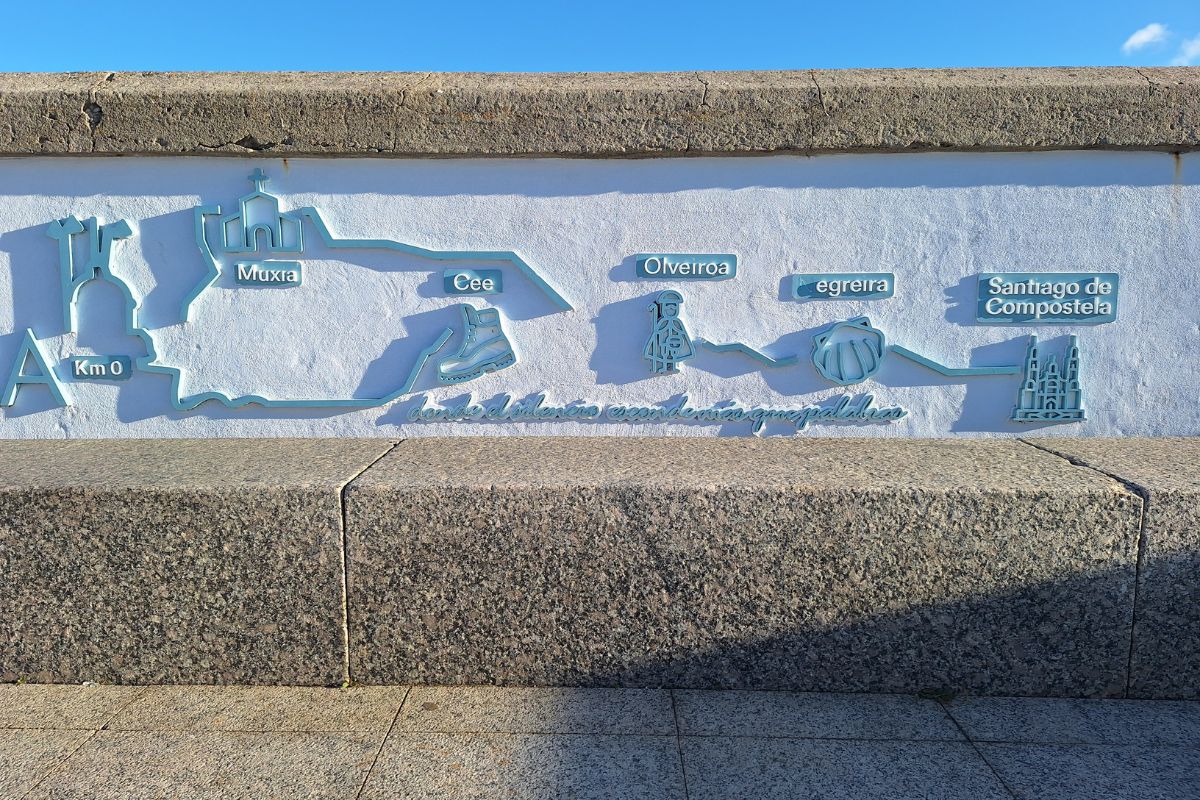
Map of the Camino to Finisterre and Muxía
Let’s get to the important part: What are the Muxiana and the Fisterrana?
The Muxiana and the Fisterrana are certificates given to pilgrims who reach Muxía and/or Finisterre. They are similar to the Compostela received in Santiago, but with a special touch.
Since the 1990s, when the pilgrimage from Santiago to Finisterre and Muxía was made official, both routes have had their own accreditation. And if you do the journey in reverse, from these two places to Santiago de Compostela, you will receive the Compostela.
Where to get the Muxiana and the Fisterrana?
As you know, this Camino, starting in Santiago, has a fork in the village of Hospital, with its two milestones or markers. There, you will have to decide whether to go to Muxía or Finisterre.
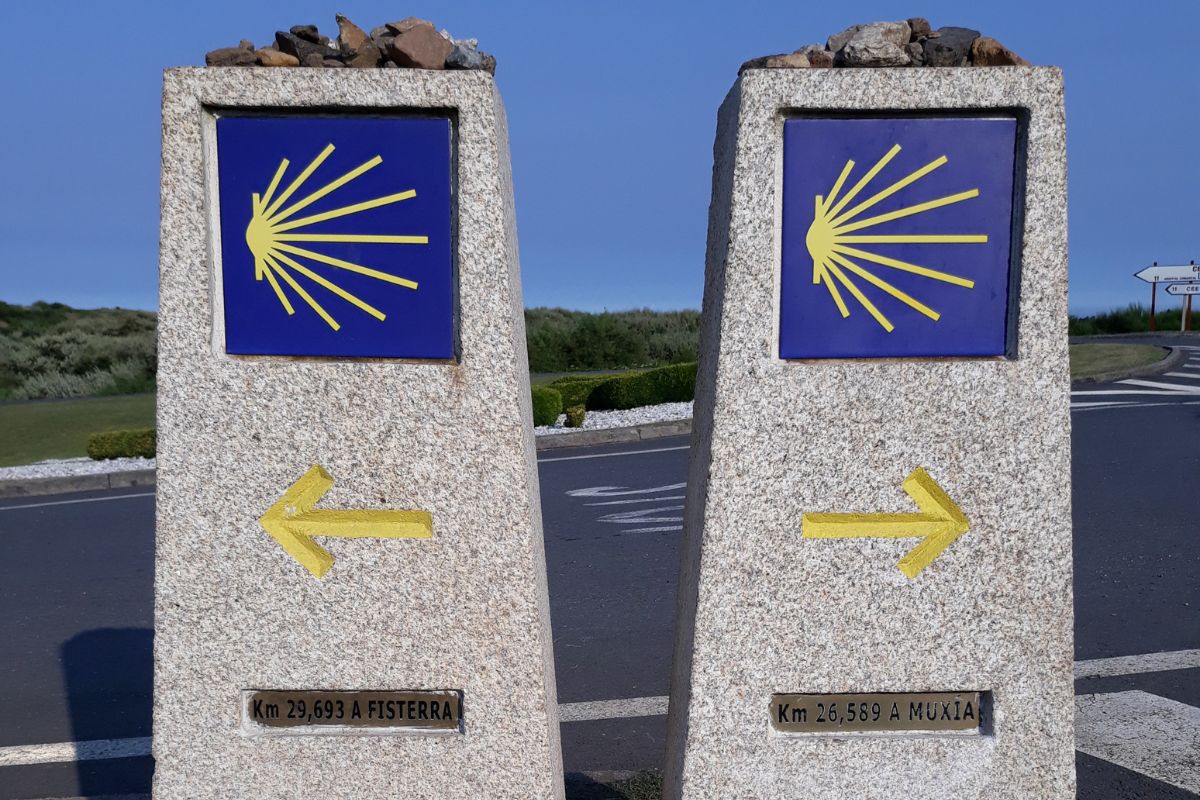
The two milestones at the fork in Hospital, on the Camino to Finisterre and Muxía
In Finisterre, you will get the Fisterrana, and in Muxía, the Muxiana, but it is not required to reach both points to get one or the other. Many pilgrims finish in Finisterre or Muxía, but most complete the entire route, thus obtaining both certificates.
Fisterrana
The Fisterrana is obtained in Finisterre, the point considered the end of the world in ancient times. To receive it, pilgrims must complete the route from Santiago de Compostela to Finisterre, about 90 kilometers.
The Fisterrana is requested at the Finisterre Tourist Office, located on Real Street. Just like with the Muxiana, you will need your pilgrim credential with the corresponding stamps. Occasionally, it has also been issued at the public pilgrim hostel.
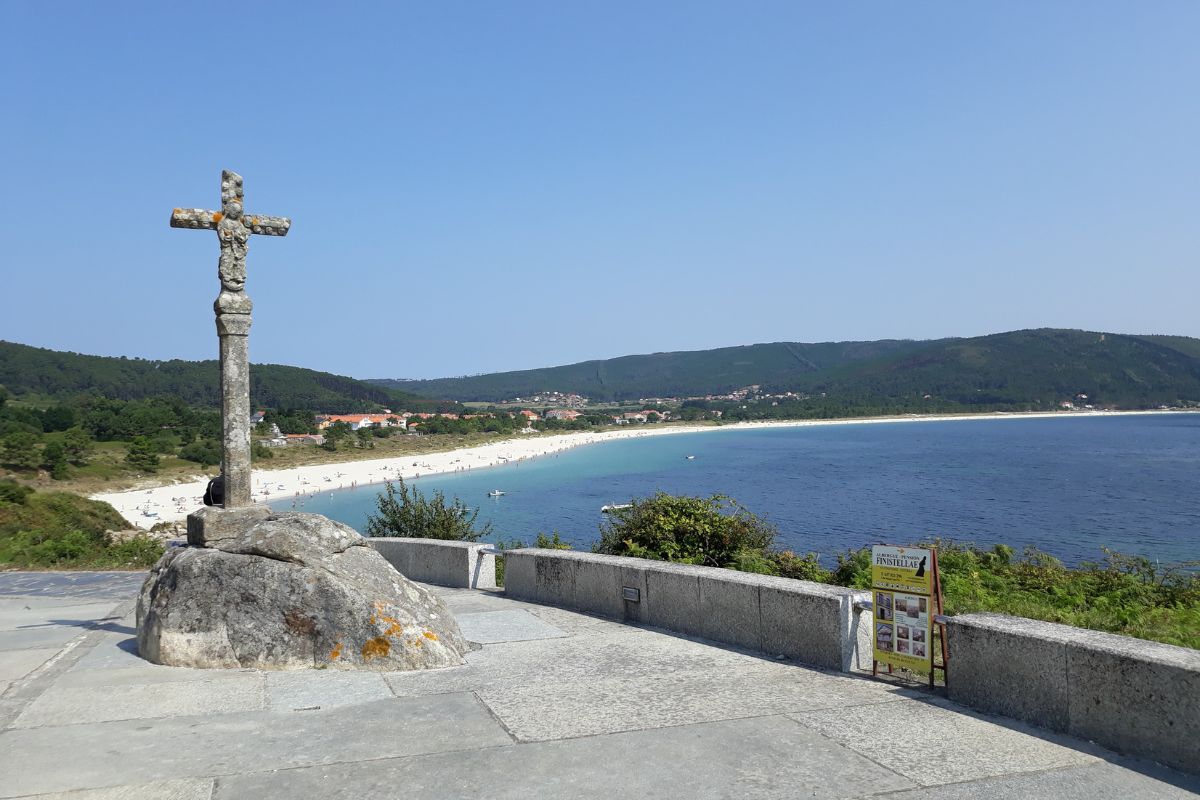
Langosteira Beach, on the way to Finisterre
Muxiana
The Muxiana is obtained upon finishing the Camino in Muxía. It is a recognition to the pilgrims who walk approximately 86 kilometers from Santiago de Compostela to this picturesque coastal town.
To request the Muxiana, you must go to the Muxía Tourist Office, located in Concello Square. You need to present your pilgrim credential, stamped at key points along the Camino. Occasionally, it has also been issued at the public pilgrim hostel.

View of Muxía
Everything you need to know about the Camino to Finisterre and Muxía
The Finisterre and Muxía Way is an extension of the Camino de Santiago, and is actually called the Epilogue. The stages would be as follows:
- From Santiago to Finisterre: about 90 km, usually done in 4 stages.
- From Santiago to Muxía: about 86 km, usually also done in 4 stages.
And for those in Finisterre or Muxía who want to reach the other point, there is no need to go back to the aforementioned fork in Hospital. Finisterre and Muxía are connected parallel to the Atlantic Ocean by 30 km, which can be done in one or two stages in either direction.
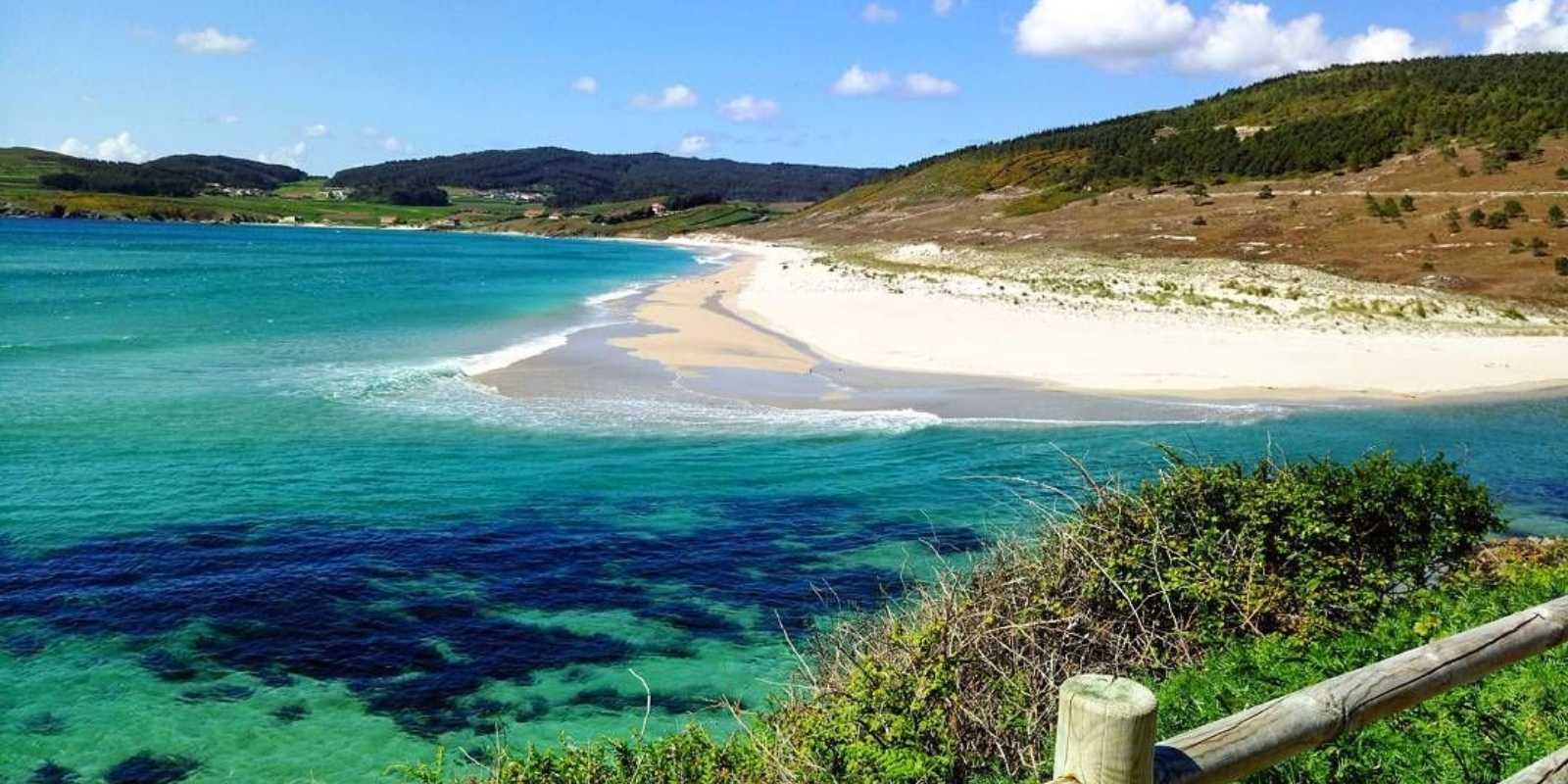
Between Muxía and Finisterre, you will pass through the beautiful Lires estuary
The symbolism of the Camino to Finisterre
The Camino to Finisterre has deep symbolism for pilgrims. It represents the continuation of the spiritual journey beyond Santiago, to the end of the known world.
Where the sun dies is where the apostle preached, among other places in Galicia. Legends like that of the Virgin of the Boat in Muxía have the apostle as a protagonist, and his figure is closely related to it. Also, the mythical town of Duio, near Finisterre, is associated with Queen Lupa and other legends.
Traditions in Finisterre
In Finisterre, many pilgrims keep the tradition of burning a piece of clothing or the boots used during the Camino. This act symbolizes rebirth and the beginning of a new stage in their lives. However, today this is strictly prohibited, as it is a protected environment.
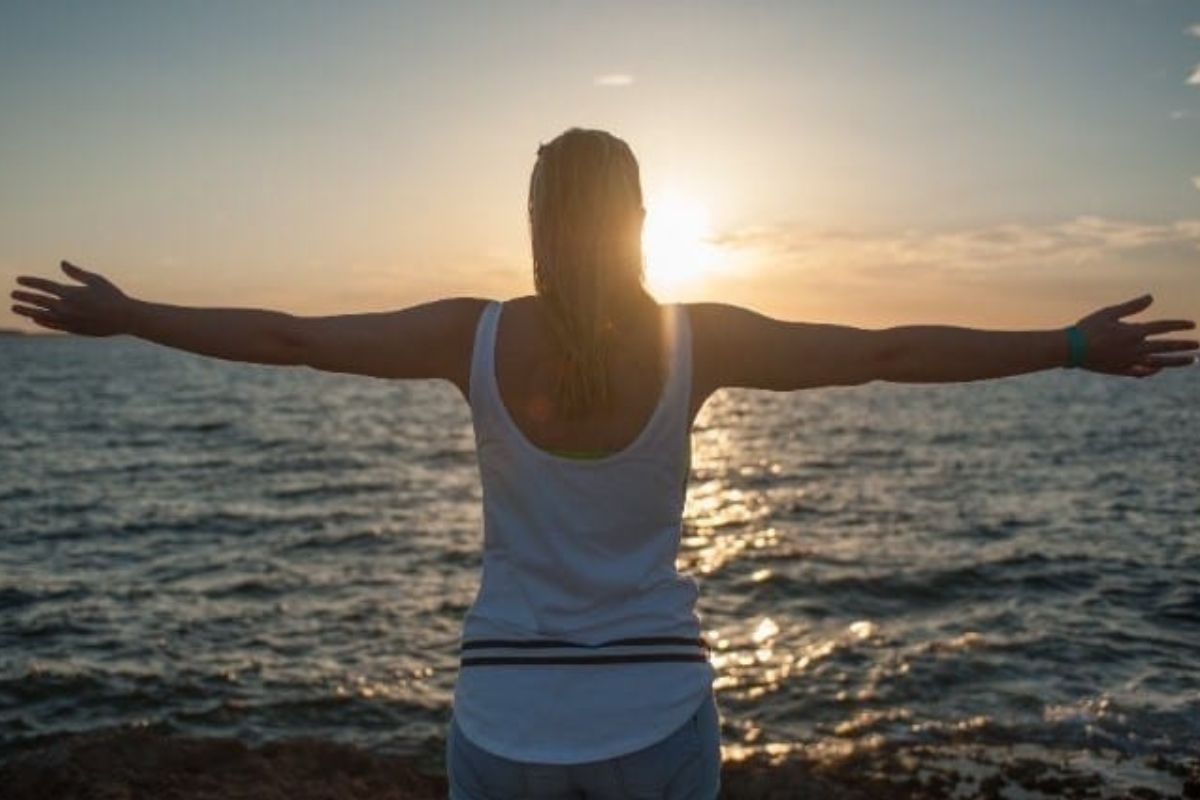
Pilgrim enjoying the sunset in Finisterre
Still, you must not miss the sunset at Cape Finisterre, one of the most magical moments of the journey. It is undoubtedly the perfect ending to a very special pilgrimage.
Traditions in Muxía
In Muxía, pilgrims usually visit the Sanctuary of the Virgin of the Boat. Legend says that the Virgin Mary arrived at this place in a stone boat to encourage the apostle Santiago in his preaching.
Tourists and pilgrims visit the three holy stones, Abalar, Cadrís, and Timón, which represent three parts of the Virgin’s boat: hull, sail, and rudder. Popular legend said that on the Abalar stone, a rocking stone, one could enjoy all kinds of magical and healing properties. The Cadrís stone, shaped like a sail, has an underside space through which one can pass, and doing so repeatedly, one also enjoyed healing properties.
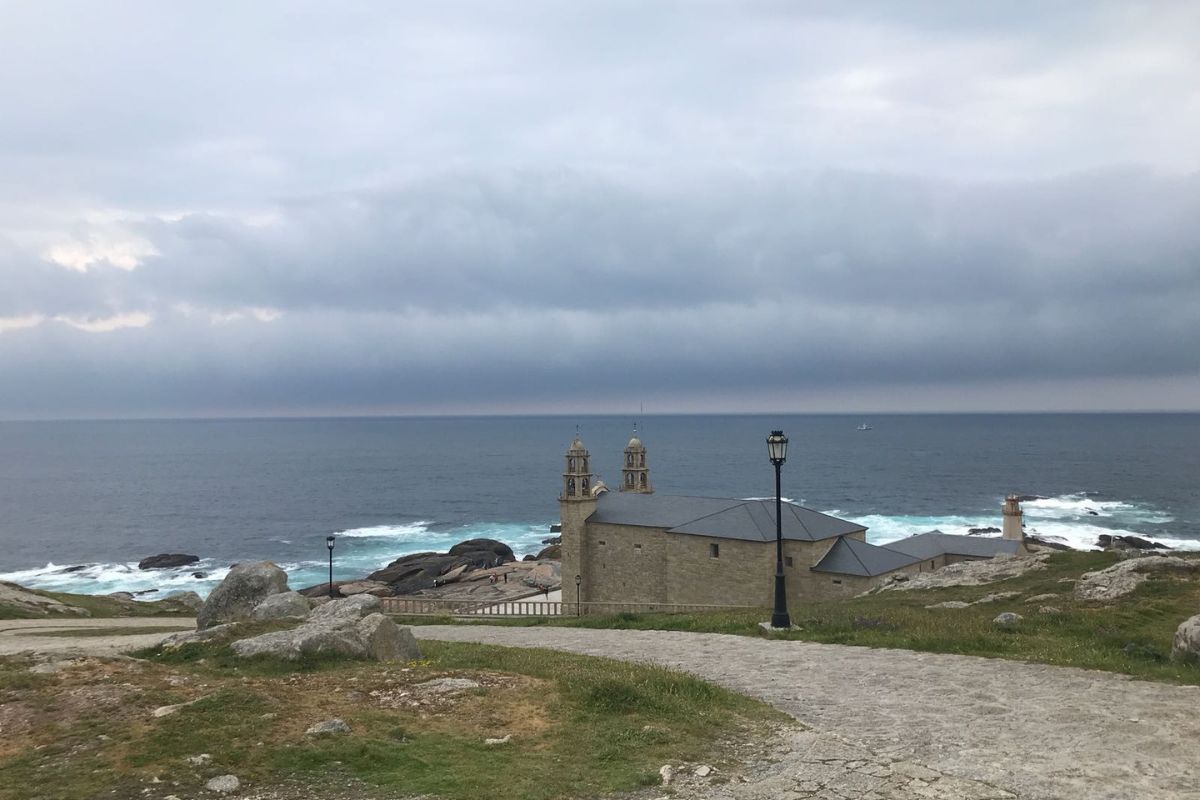
View of the Sanctuary of Virxe da Barca in Muxía
Obtaining the Muxiana and the Fisterrana is more than a physical achievement; it is a testament to the inner journey and personal transformation. Both certificates symbolize the effort and dedication of completing the Camino de Santiago and continuing to the ends of the earth.
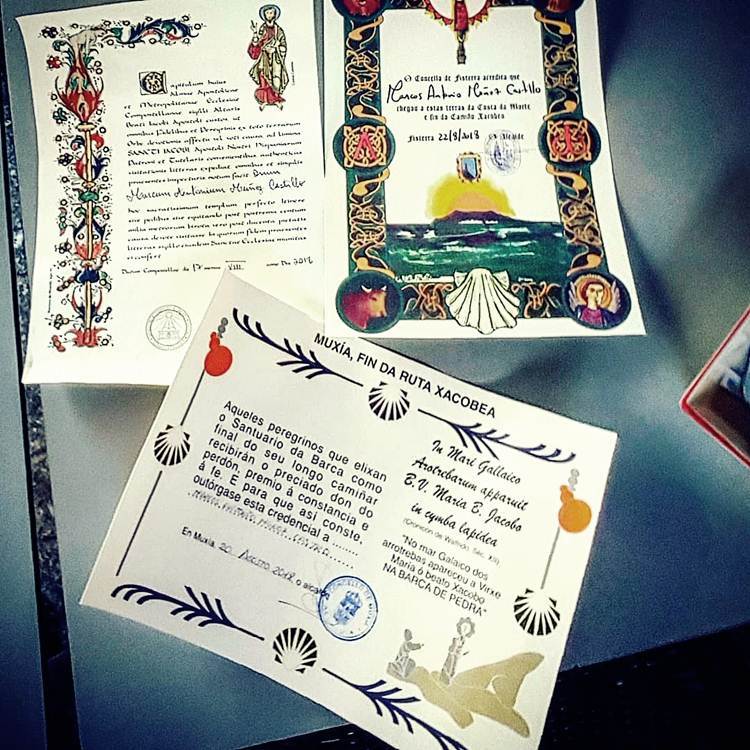
Muxiana and Finisterrana
Now that you know where and how to get these precious souvenirs, are you ready to start the Camino to Finisterre and Muxía? Remember, every step you take will lead you not just to a destination, but to a personal discovery you will treasure forever. Buen Camino!












Hi Thanks for sharing your inspiring experience!
Sorry for a probably silly question but do I understand it right that can you get a Muxiana and/or the Fisterrana if you haven’t completed any part of the Camino de Santiago pilgrimage, meaning if you just start from Santiago and walk to Finisterre or Muxía?
Hi Alina! Yes, that’s correct! You can obtain a Muxiana and/or the Fisterrana even if you haven’t completed any part of the Camino de Santiago pilgrimage. You can start from Santiago and walk directly to Finisterre or Muxía. Buen Camino!
Could I send a photocopy of my credential to the tourist offices to get the certificates for Muxia and Fisterra
Good Evening Chris.
On this case, you have to present the original for getting the Muxiana and Fisterrana.
Kind regards!